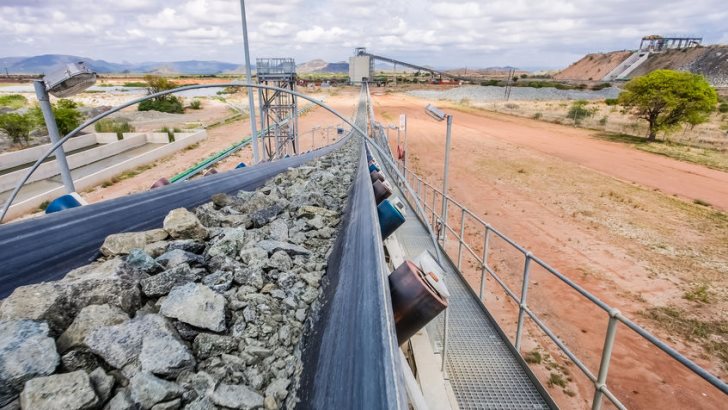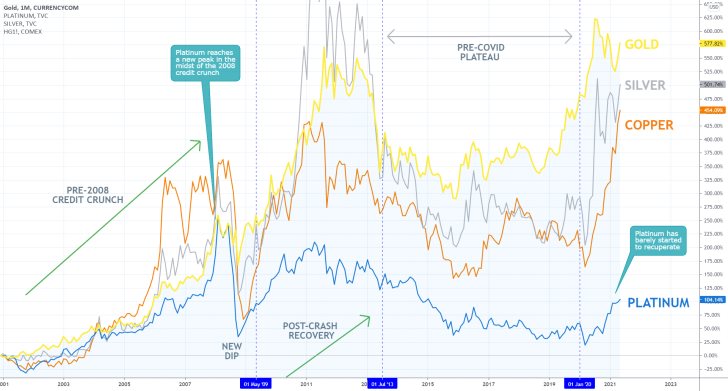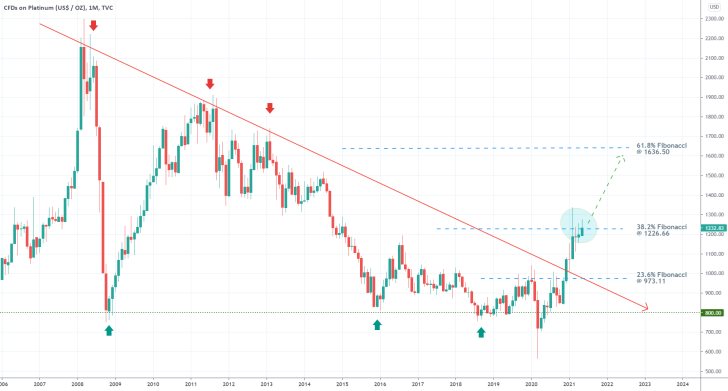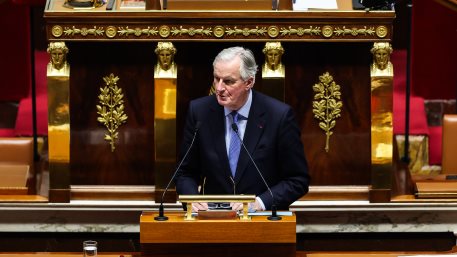
The latest buzzword at Wall Street is "supercycle". From the accelerating pace of the global recovery to soaring consumer prices, the promptly evolving economic conditions are creating a market environment that looks poised to trigger a new bullish rally in the commodities market.
What is a market supercycle?
When demand is soaring, and activity is picking up, commodities tend to embark on enormous rallies that could last years, potentially even decades. These are the type of underlying conditions that investors with an eye on stable, long-term opportunities are always on the lookout for.
The currently emerging new supercycle is the result of multiple converging factors, all of which contribute to the increasing demand for precious metals. Given the immense potential of the market at present, the massively undervalued platinum looks like the perfect asset to invest in.
Hard times create good opportunities.
The global economy has barely recouped from the 2008 credit crunch when the 2020 coronavirus crisis swept across the globe with unexpected ferocity. In the wake of the initial crash, governments and central banks started pumping massive amounts of liquidity into their economies, which continue to survive on monetary life support.
The initial reaction of investors and traders was to take advantage of the 'easy capital', which led to happy times on the stock market for a while. But now that bonds are once again on the rise, fears of mounting uncertainty are likely to redirect attention towards lower-risk securities, putting precious metals at the centre stage in the upcoming rally.

As per usual, gold continues to be the benchmark that everybody turns to for guidance. Its price was rising throughout the credit crunch and in the period of heightened uncertainty following the burst of the debt bubble. When tensions seemed to lessen during the period between the two crises, the price of gold was trading more or less horizontally in a plateau.
It started rising once again in the wake of the coronavirus crisis, driven by the desire of market participants to hedge their portfolios against the looming pandemic uncertainty. And now that tensions are once again depreciating following the initial shock; gold looks poised to slide yet again.
Capital is being redirected from the safe haven towards other low-risk securities with better prospects for robust gains over the next several years. That is why silver and copper registered such massive gains since Q1 of 2020.
Platinum managed to recuperate a bit as well, but there is still much spare capacity remaining. The good news is that investors looking to lock in trades with long-term prospects can exploit this remaining potential.
Economic activity and inflation
The substantial fiscal stimuli injected into the global economy in the past year are intended to cushion the coronavirus fallout and create jobs, thereby promoting growth. The support is already paying off, even though persisting unemployment is still a problem.
Increased demand for platinum is not only speculative in nature, but it's also nested in solid economic reasoning. At times of great financial distress, government spending serves as a catalyst for growth by creating industrial demand.
The legacy of each crisis is thus observed in the industries that survive and thrive afterwards. And it's precisely this heightened demand that remains after each market turmoil, continuing to fuel the commodity supercycles for years at an end.

Another consequence of government intervention is typically encapsulated by growing inflation. Spending pushes the throttle pedal of the economy to the floor, and growth accelerates. However, bolstered demand also leads to soaring prices, which, in turn, pose a threat to the underlying recovery in themselves.
The diminished purchasing power of a given currency scares investors who once again find themselves in the awkward position of having to seek refuge from the reinvigorated uncertainty. The inflation fallout could thus bolster the aforementioned demand for lower-risk securities, which are in a much better position to resist inflation as opposed to currencies.
That is why the otherwise troubling trend of soaring inflation is good news for platinum, among other such commodities. The aggregate demand for precious metals is thus not only unlikely to suffer, but instead, the likelihood of it surging is comparatively larger.
For all of these reasons, the price of the massively undervalued platinum is only likely to appreciate in the long term, possibly being inspired by the development of a new supercycle.
As shown on the monthly chart above, the commodity's price has already broken out above the 23.6 per cent Fibonacci retracement level and the descending trend line (in red). Both of these developments confirm the sharply rising bullish sentiment in the market.
Platinum is currently struggling to break out above the 38.2 per cent Fibonacci retracement level, which could lead to a minor bearish pullback. Nevertheless, once such a breakout does occur, the price would be cleared to continue appreciating towards the 61.8 per cent Fibonacci.
In the long term, the price action is set to test the psychologically significant resistance level at 2000.00. Needless to say, this means that the new supercycle is likely to cause the price of the commodity to more than double by the time the market peaks.




















